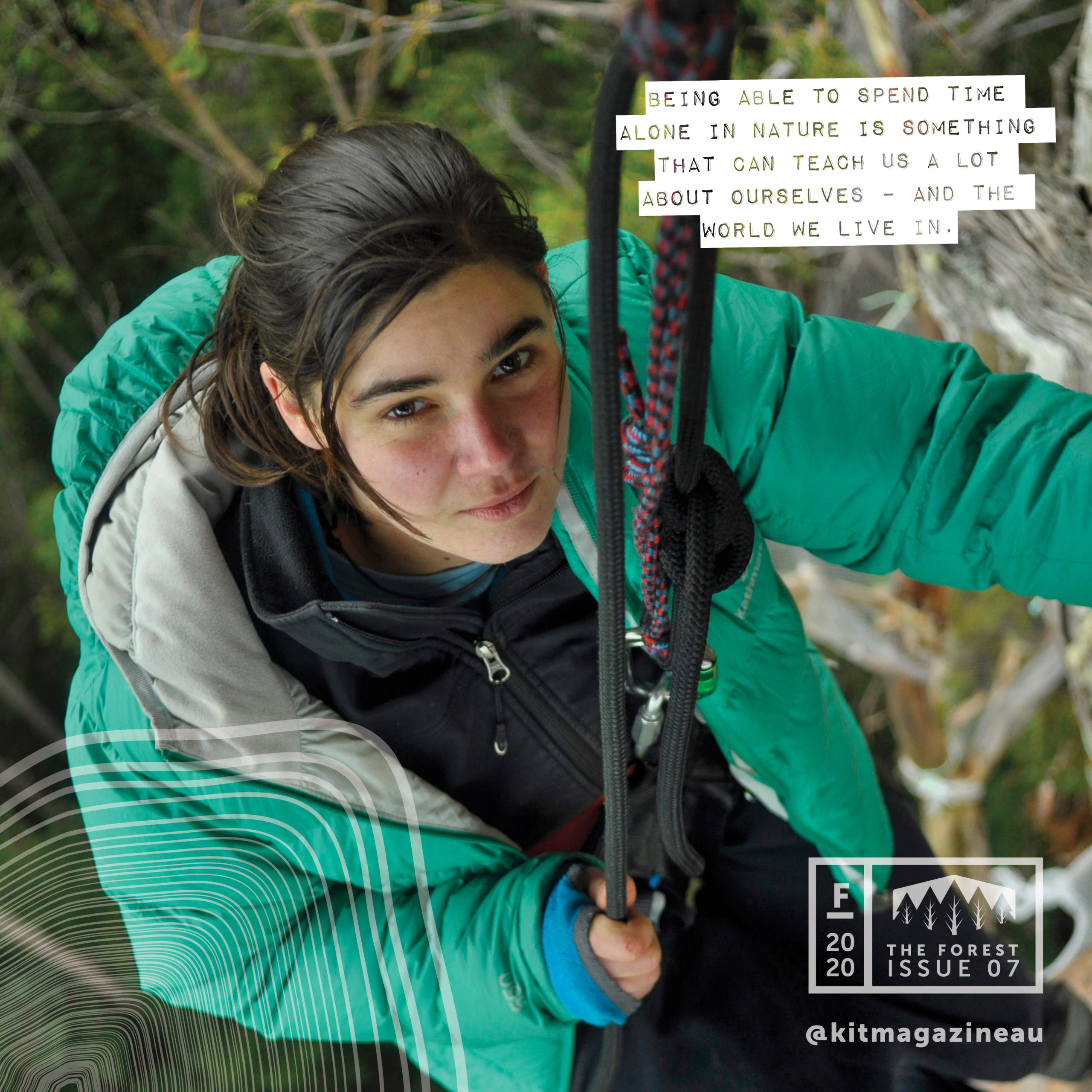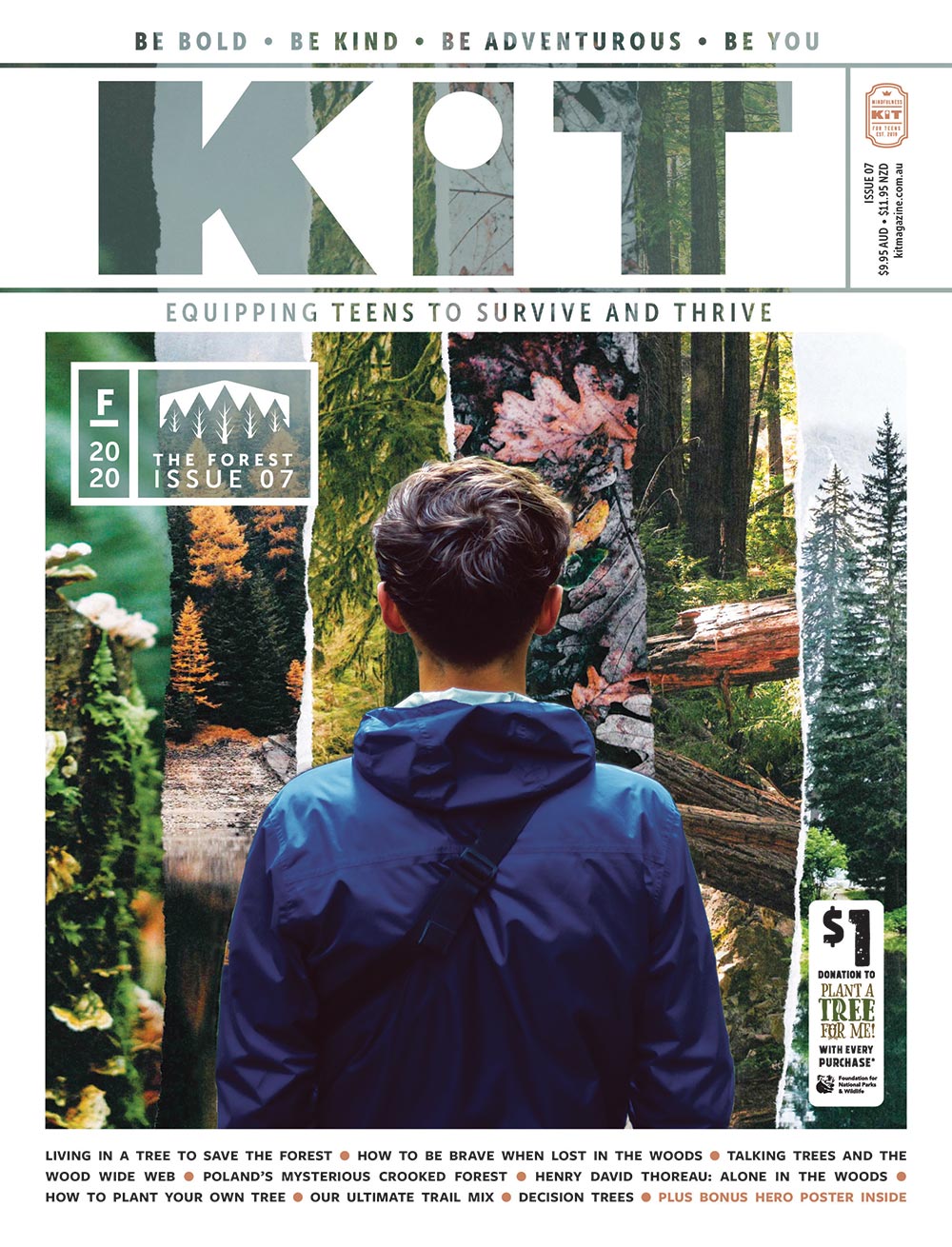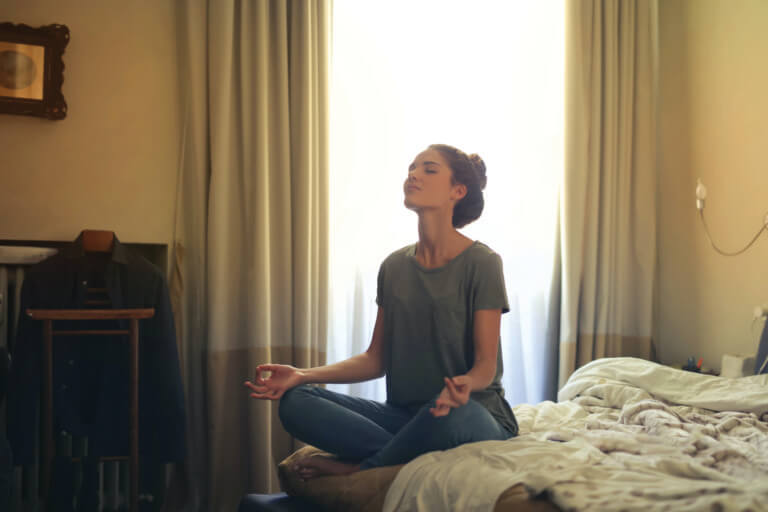
Miranda Gibson spent over a year living in a tree without putting her feet on the ground even once. Why? To save Tasmania's ancient forests from destruction.
Thanks to coronavirus, many of us had a brief taste of isolation in 2020. It was definitely challenging to be stuck at home – unable to go to school, play sport or hang out with friends. But what if you had to be isolated for more than a year? And not at home, with all your stuff, but high above the earth, in the boughs of a tree? Imagine sleeping all alone, way up in the canopy, and enduring the elements 448 nights in a row!
That’s what Miranda Gibson did.
Angry with companies that were quickly cutting down Australia’s old growth forests for profit, Miranda one day climbed up a 60-metre tall, 400-year-old tree in Tasmania’s Tyenna Valley – she would come to call it The Observer Tree – and vowed to stay there as long as it took to save the ancient Eucalypt’s life. Half a million hectares of Australian forests were already being cleared each year to make money on valuable timber – and this place was next on the list. Loggers were already zoning in on the area.
“I lived on a little platform suspended in the top canopy,” Miranda says. “There were a lot of cold nights.” How did she manage to tough it out? “The snow was so beautiful – so that helped me get through the harshness of winter. I tried to stay warm by tucking myself into my sleeping bag and swag at night.” Above all, however, it was her relationship with The Observer Tree itself that kept Miranda going. “The tree and I both relied on each other,” Miranda says. “Its strength held me up, and my commitment to staying there was the only thing between it standing and being cut down by a chainsaw.”
HEALTHY FORESTS, HEALTHY WORLD
An old-growth forest is a healthy forest that has been left largely undisturbed by humans. It exhibits unique ecological features, including multi-layered canopies, varying tree heights and widths, and a great diversity of both plant and wildlife species.
These forests are life-giving. Not only are old-growth forests essential for their role in the water cycle, in climate regulation, in cleaning the air and preventing soil erosion, they are also an important habitat for animals.
The Styx-Tyenna area of Tasmania, where The Observer Tree is located, is known for having the highest concentration of large, ancient Eucalypts in the world. The area is also an important habitat for rare and threatened species, including the endangered wedge-tailed eagle and the Tasmanian Devil.
Forests are being cleared worldwide each day. At this rate, one estimate says that all the world’s forests could disappear within 250 years. That’s a scary thought. If we continue to eradicate our forests, how will we breathe? What wildlife will we have left? What irreversible damage will this do to our entire planet?
TAKE A STAND FOR SACRED LAND
Australia has a long and proud history of environmental activism. People like Miranda have been active here since the 1860s. But it wasn’t until a century later that things really took off. Around the world, the 1960s and ’70s saw an explosion in efforts to raise awareness about racism, women’s rights and other forms of social justice, especially through forms of public protest. It was at this time that the need to conserve the natural environment really became a matter of widespread public debate.
Usually, protests have taken familiar forms of crowds gathered in a public place, yelling out chants and waving placards. But there have also been those willing to go to extremes to defend our environment. In 1979, for example, the Terania Creek rainforest of northern New South Wales faced imminent destruction by industry. 100 people decided to take their anti-logging protest to the next level. They formed a human barricade to block bulldozers, creating a non-violent protest that caught everyone’s attention. Previously, their protest letters had been ignored, but now the government was listening. Soon after, over 20 national parks in NSW were listed as protected.
In this tradition, eco-warriors like Miranda continue to fight for the rights of the environment. Armed with a laptop, an internet connection, a ground crew who sent up food and water, and a world of online supporters, Miranda kept her tree safe.
HANGING IN THERE, MAKING CHANGE
Environmental protesters can and do make change. “If no one were to take action to protect forests and other threatened places, they would all be destroyed,” Miranda says. With her ‘tree-sit’, Miranda aimed to gain the attention of the Australian government and the World Heritage Committee. Unfortunately, after 449 days, she was forced to leave her tree before she got a result. Only 1.5km away, a bushfire threatened to engulf her forest. She was heartbroken to say goodbye, but her protest had already gained enough exposure through news headlines to fire up the government. “In 2013, we finally had a big victory. 170,000 hectares of Tasmanian forest was protected as World Heritage,” Miranda says proudly. “This means that they are deemed so important they need to be protected for the sake of the whole world. The government and logging companies are not allowed to destroy them.”
TREE OF LIFE
Miranda’s 14 months living in The Observer Tree influenced change. But they also inspired a profound change in Miranda herself. She had always been passionate about nature, but living so close to it for this long gave her a new sense of its importance. “Now, regardless of physical distance, I will always feel a sense of connection to my tree. I will always feel its presence in my heart,” Miranda says.
“Even though I was alone on a tiny platform each day, life didn’t feel boring to me,” she says. “I noticed subtle things – the light touching the treetops in different ways each morning, the slow change of seasons, the wind that would make the leaves dance, the patterns of the honeyeaters that would visit each day.”




















